From August 2023 the comments on statistics, a short description of selected, recently issued statistical data in the area of monetary statistics and the non-residents sector statistics, are no longer published. They are replaced by Statistical releases.
Comments on monetary developments for September 2022
Total liquid assets (M4) and money (M1) decreased in September, while their growth decelerated on an annual basis.
Total placements of monetary institutions to domestic sectors (except the central government) increased in September, largely due to the growth in placements to non-financial corporations. Household placements grew only slightly, with the sharpest increase seen in housing loans.
Total liquid assets (M4[1]) decreased in September, by HRK 2.2bn or 0.5% (Table 1), as a result of the fall in net foreign assets (NFA) of credit institutions and the parallel mild growth in net domestic assets (NDA) (based on transactions). Money (M1[2]) dropped by HRK 2.5bn from August, reflecting a fall in currency outside credit institutions. Together with the usual decrease in currency in September after the end of the peak tourist season, the approaching introduction of the euro has added to a decrease in currency and an increase in foreign currency deposits in recent months. The rise in foreign currency deposits of households and corporations was marginally larger than the fall in kuna deposits of domestic sectors, so that quasi-money edged up from August (Table 3). Foreign currency deposits thus continued to trend upward, growing perceptibly on an annual basis as well, while the annual growth in funds in transaction accounts was slightly below the peaks seen in recent years, when the funds in savings and time accounts dropped and the funds in transaction accounts increased. As a result, the annual growth in M1 continued to decelerate sharply, to 8.5% in September (based on transactions), while the rise in M4 slowed down only slightly, to 9.3% (Figure 1).
| Figure 1 Monetary aggregates annual rates of change based on transactions |
Figure 2 Placements annual rates of change based on transactions |
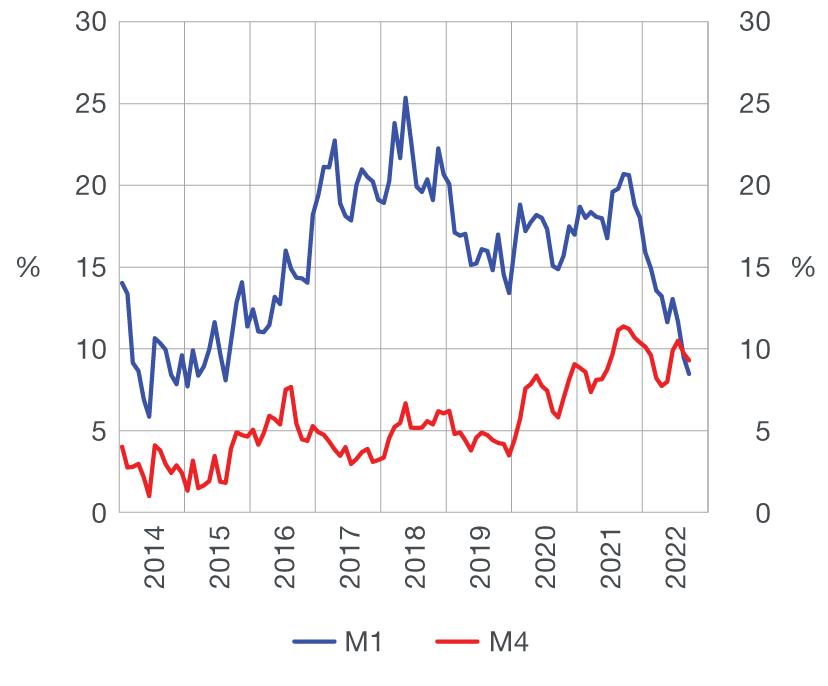 |
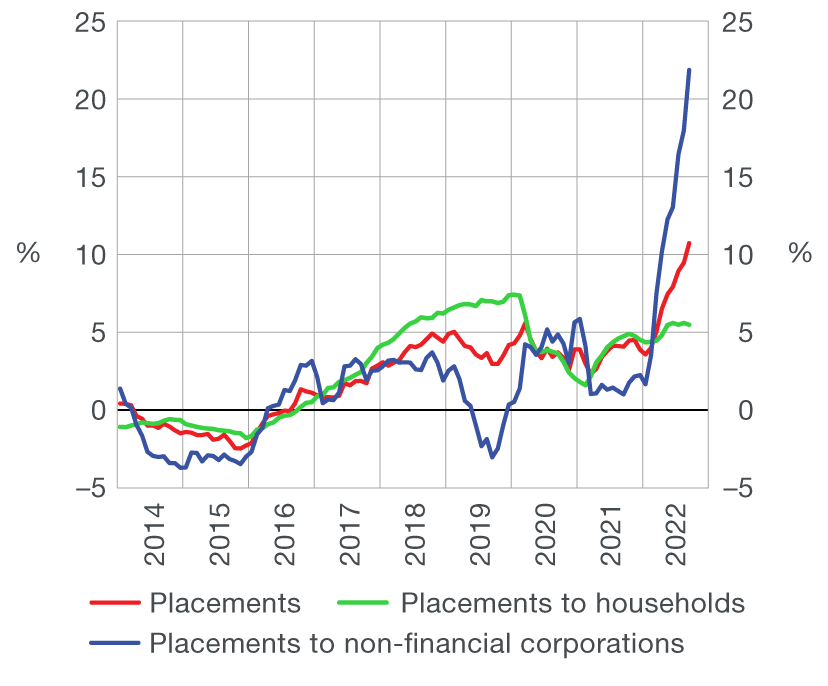 |
| Source: CNB. |
Total placements of monetary institutions to domestic sectors (except the central government) grew by HRK 2.8bn or 1.1% (transaction-based) in September, while their annual growth rate continued to pick up, reaching 10.7% (Figure 2). The monthly growth of placements is entirely related to loans as the predominating item in placements, with loans to non-financial corporations rising sharply (by HRK 2.7bn) (Table 2). As in the previous few months, the largest amounts of loans went to energy sector corporations. Specifically, the surge in energy prices has raised their need for working capital, giving a push to demand for loans. The growth in corporate loans picked up perceptibly on an annual basis, from 17.2% in August to 21.4%. Loans to the household sector grew slightly in September from the month before (HRK 0.3bn), while their annual rate of change decelerated marginally, to 5.5%, from 5.6% in August. Broken down by instrument, housing loans continued to grow (HRK 0.4bn), whereas general-purpose cash loans decreased (HRK 0.1bn). In annual terms, the rise in housing loans remained at 9.4%, while the growth in general-purpose cash loans slowed down, from 3.8% to 3.1%.
Table 1 Summary consolidated balance sheet of monetary institutions
in billion HRK and %
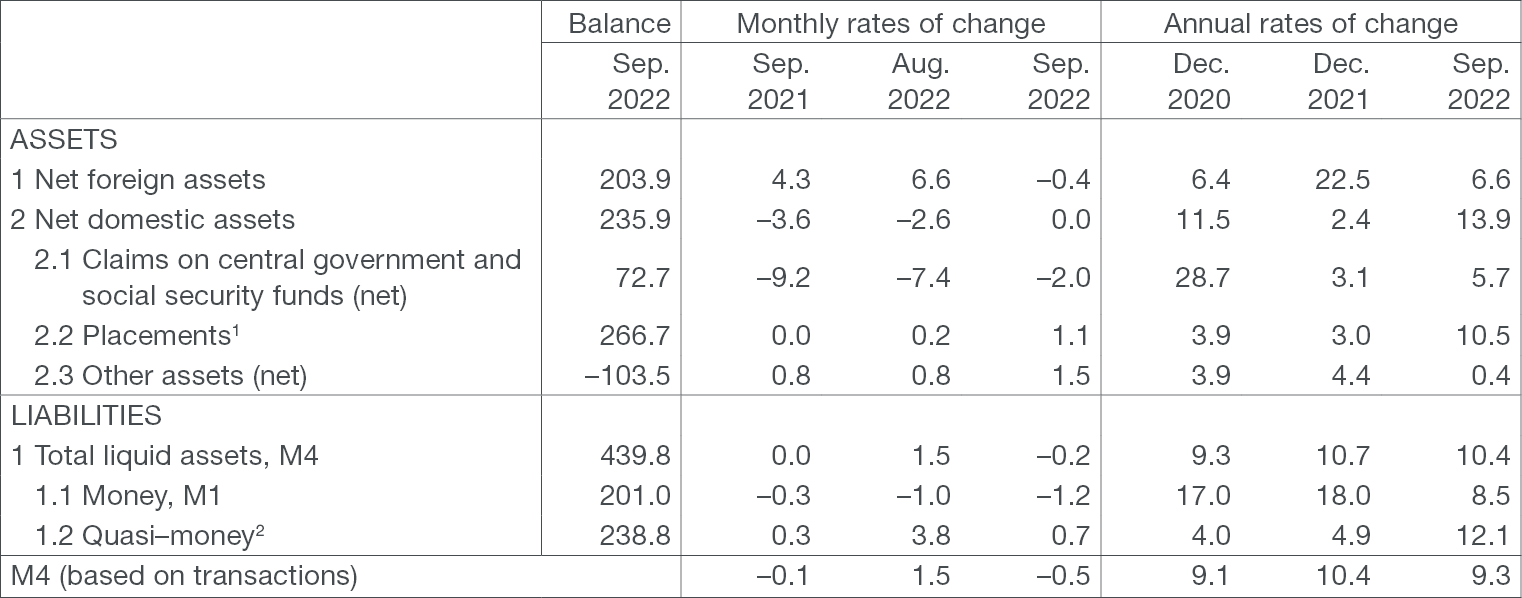
1 The sum total of asset items 2.2 to 2.8 of Bulletin Table B1: Consolidated balance sheet of monetary financial institutions.
2 The sum total of liability items 2 to 5 of Bulletin Table B1: Consolidated balance sheet of monetary financial institutions.
Source: CNB.
Table 2 Loans (except the central government) and main components
in billion HRK and %
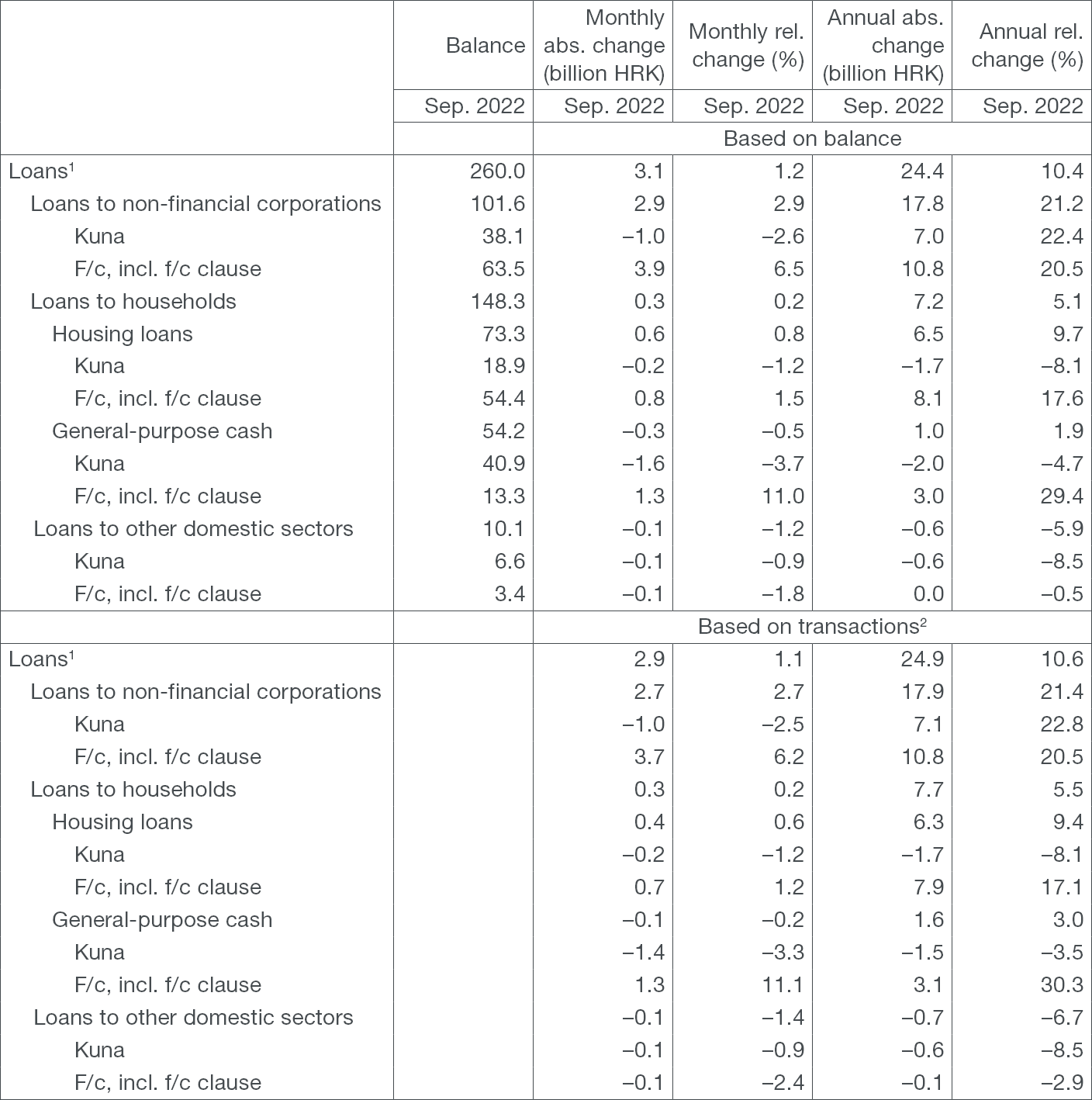
1 In addition to loans to non-financial corporations and households, they also include loans to the local government and other financial institutions.
2 The transactions show changes that exclude the effects of exchange rate changes, securities price adjustments, reclassification and write-off of loans, including the sale of loans in the amount of their value adjustment.
Source: CNB.
Table 3 Deposits (except the central government) and main components
in billion HRK and %
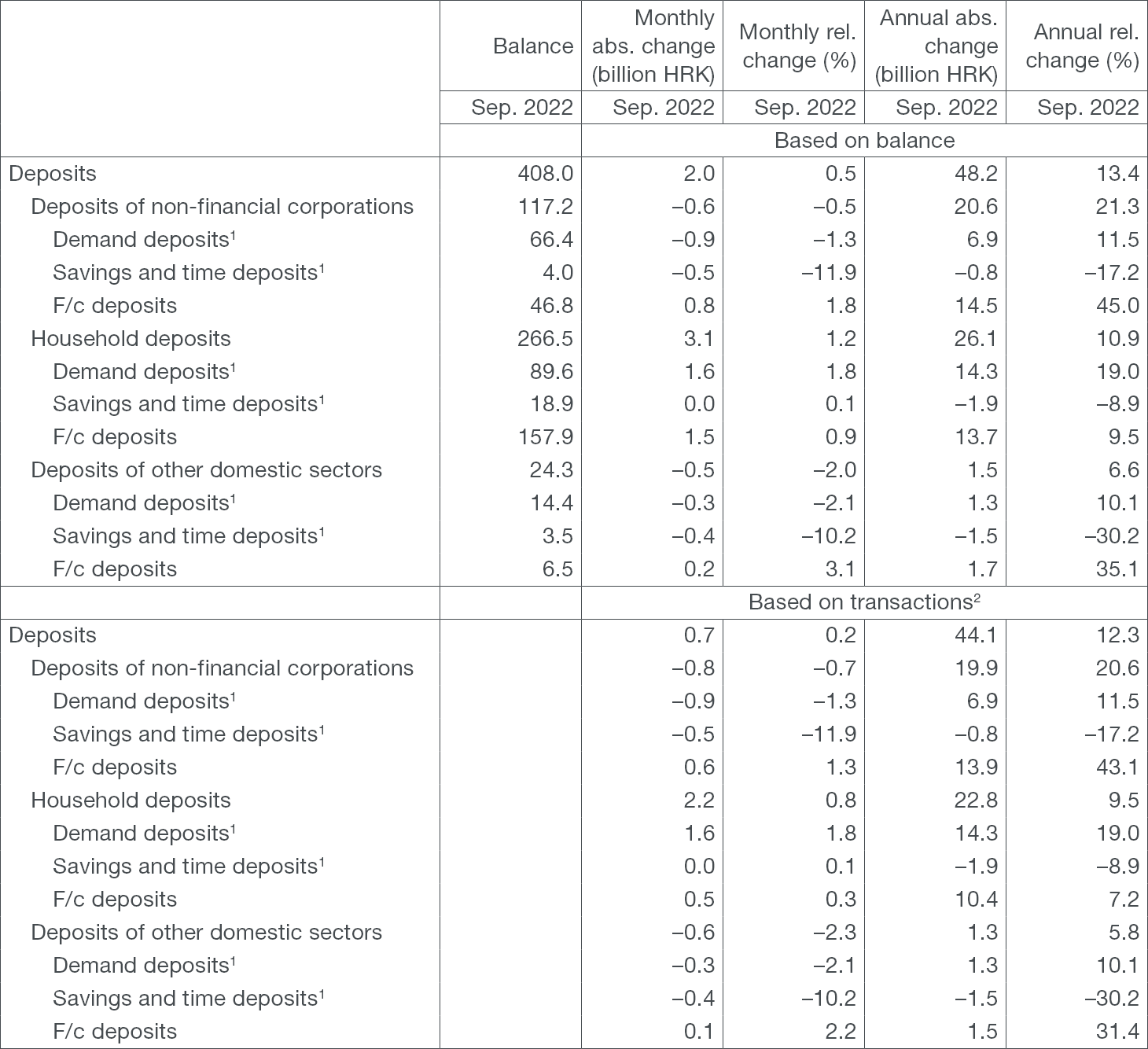
1 Includes only kuna sources of funds of credit institutions.
2 The transactions show changes that exclude the effects of exchange rate changes, securities price adjustments, reclassification and write-off of loans, including the sale of loans in the amount of their value adjustment.
Source: CNB.
For detailed information on monetary statistics as at September 2022, see:
Central bank (CNB)
Other monetary financial institutions
